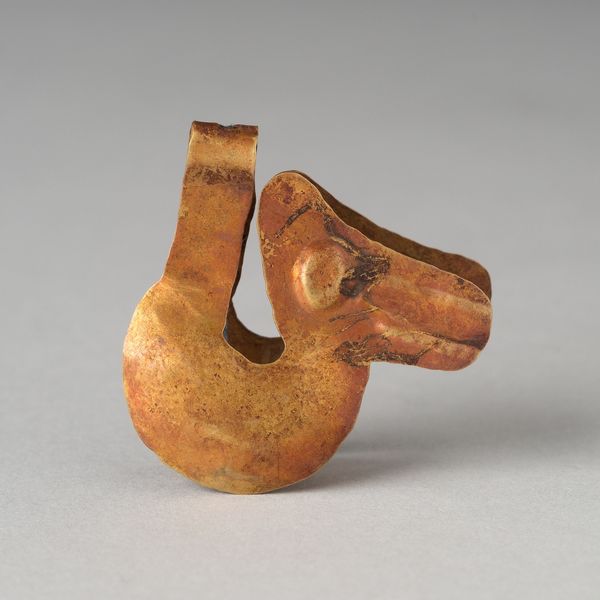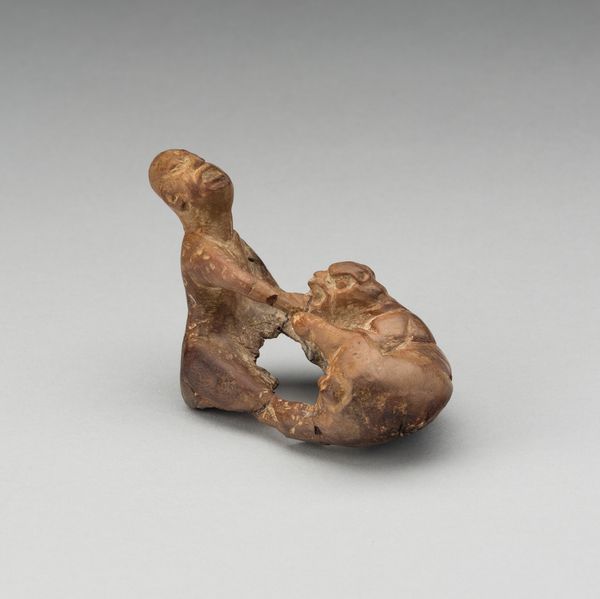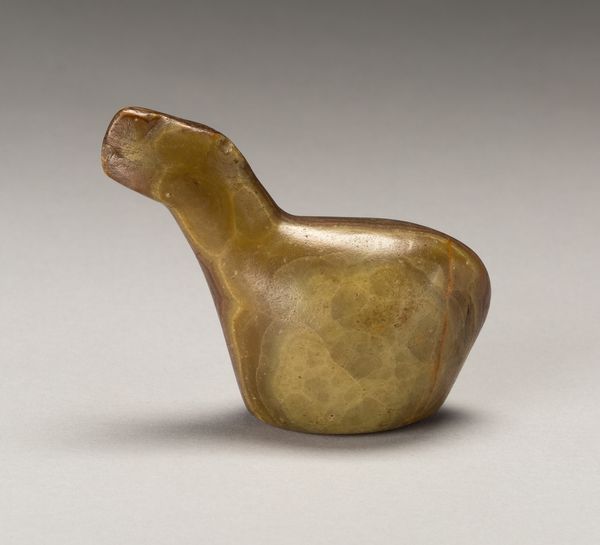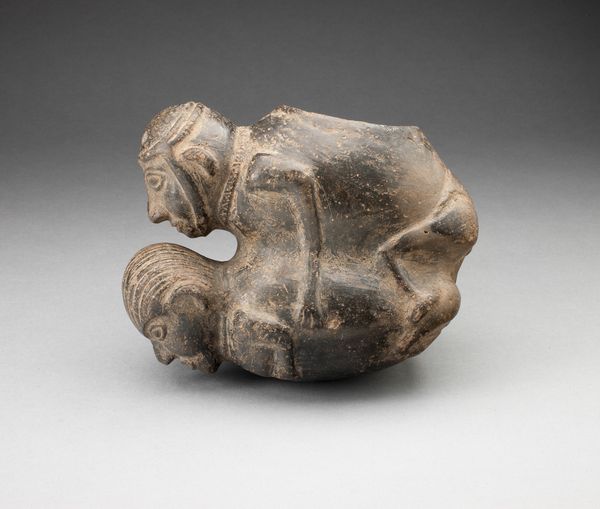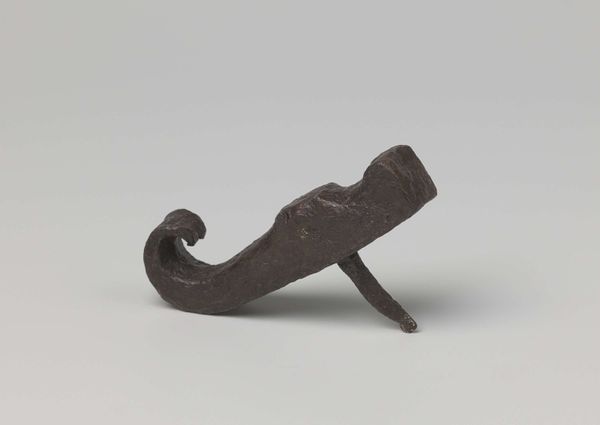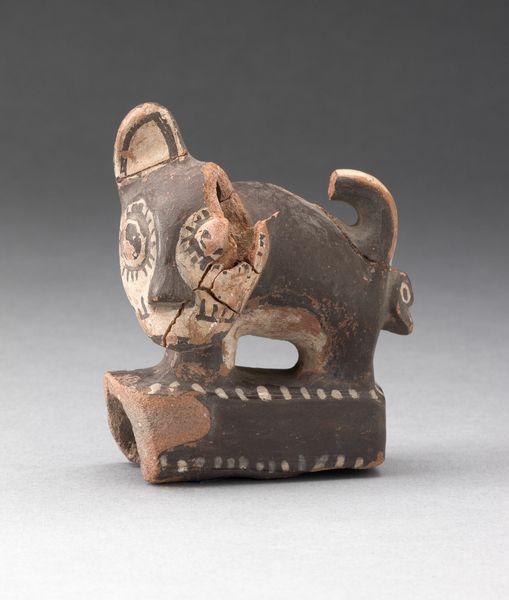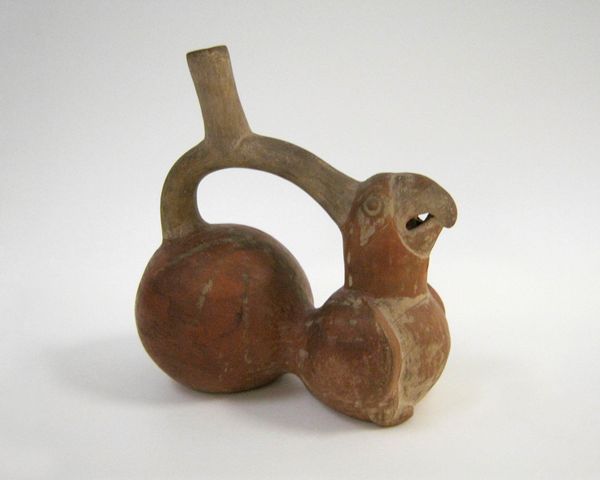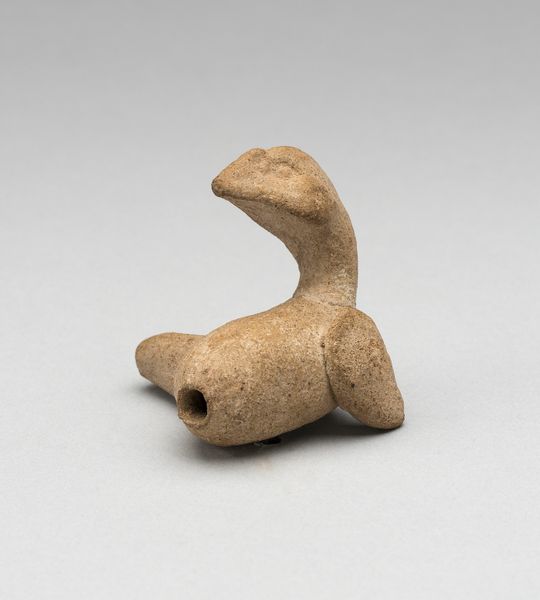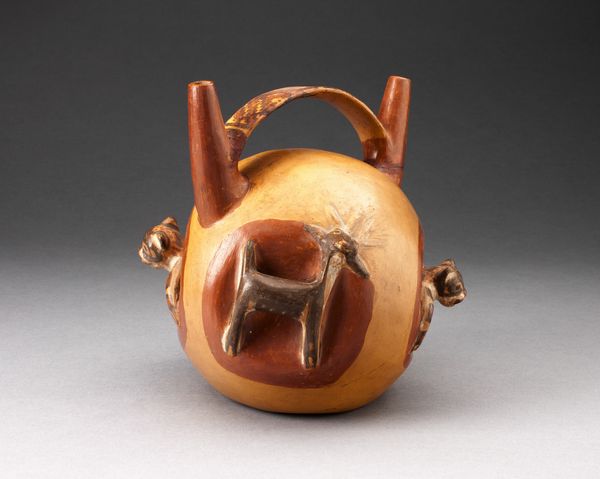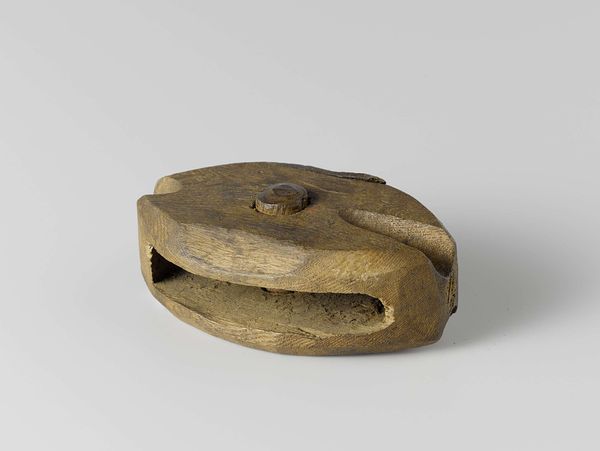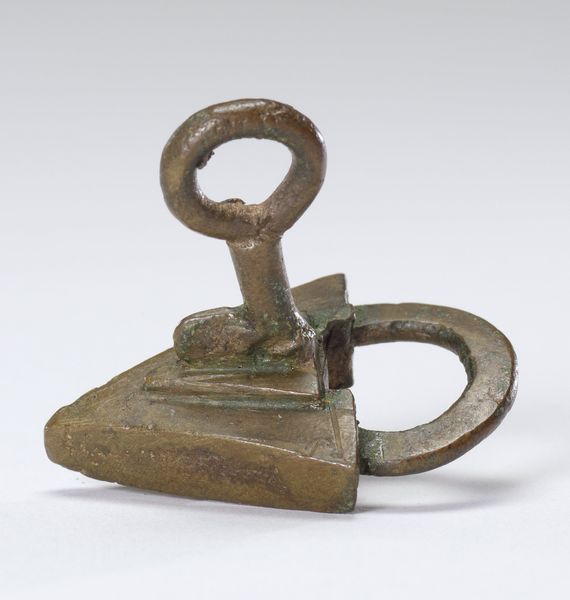
metal, sculpture
#
3d sculpting
#
3d printed part
#
rounded shape
#
metal
#
jewelry design
#
virtual 3d design
#
sculptural image
#
curved arc
#
3d shape
#
wearable design
#
sculpture
#
3d modeling
#
indigenous-americas
Dimensions: L. 4.8 cm (1 7/8 in.)
Copyright: Public Domain
Editor: So, here we have these "Tweezers in the Shape of a Bird," created by the Chimú culture, dating somewhere between 1000 and 1400. It’s a small, metal piece, residing here at the Art Institute of Chicago. What strikes me is how such a functional object is also a stylized representation. What do you make of it? Curator: Well, seeing a utilitarian object elevated to this level of artistry opens interesting avenues into the cultural context of the Chimú people. Tweezers weren't just tools, but potentially items of status, possibly even ritual importance, consider the value they placed on adornment and the social meanings behind body modification. What purpose might they serve within their social hierarchy? Editor: That’s a great point. I hadn’t considered it as a status symbol. The bird motif also suggests a connection to their belief system, right? Was the imagery controlled and used by the elite? Curator: Precisely. Bird imagery was likely connected to their cosmology, perhaps representing messengers between worlds or symbols of power. Thinking about the control of resources, especially metal, who had access to artisans capable of creating such objects? How did that access reinforce existing power structures? This isn't just about personal grooming, is it? Editor: No, not at all. I'm starting to see how deeply intertwined art, daily life, and political power were in this culture. I appreciate the shift from seeing this as a mere artifact to understanding it as a socio-political statement. Curator: Exactly! These "Tweezers in the Shape of a Bird" provide valuable information, but more importantly, they prompt us to question our modern perspectives on function and value within different cultures. Editor: I see now it is much more than a small object. I learned that artworks often serve to maintain or contest existing social arrangements and that the art object has a political charge.
Comments
No comments
Be the first to comment and join the conversation on the ultimate creative platform.
